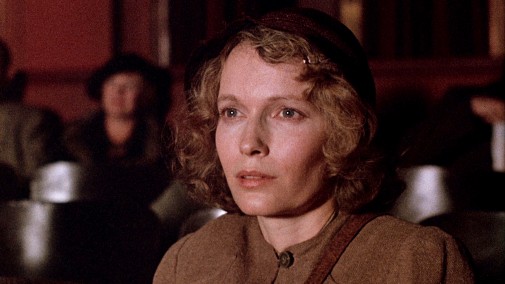
As people who love cinema, I think we can all understand the power art can yield over those who experience it. Whether finding refuge in an escapist dream or seeing an ugly truth reflected at us, the act of being an audience has the potential to startle and surprise, to devastate and entertain. I can often recall those moments when a film overwhelmed me in such ways that I ended up making a spectacle of myself. There were my sobbed laughs at a Whitney Houston karaoke in Toni Erdmann, the breathless shock at Hereditary's peanut panic, the miraculous tears when faced with Parasite's perfect montage and so much more. Those memories are like precious jewels, bright reminders of why I love cinema.
Because of this, I have a special fondness for films that try to capture that inchoate ecstasy that happens when an audience is similarly enraptured…

Filmmakers seem to be particularly enamored with the idea of Opera as a catalyst for emotional devastation. Nicole Kidman was never better than when reacting to the glorious sound of Wagner's Die Walküre in Birth. That oft-misunderstood masterpiece by Jonathan Glazer deals with complicated psyches and psychosexual conundrums, but, for a moment, we see clearly through its hazy mysteries. We see our gaze mirrored and we understand Nicole's troubled widow better than ever. In the noisy silence of her reaction, it can be difficult to articulate the specificities of thought, but we feel the searing reality of her epiphany, it reverberates through the screen.

At the end of Margaret, Anna Paquin gets to play another of these opera-fueled revelations though her approach is much less poised than Kidman's. The Oscar-winning actress from The Piano breaks apart before our eyes, the magnitude of the world crashing down on her teenaged shoulders with the robust power of The Tales of Hoffmann's melodies. These scenes don't always need to be conduits for galvanized pain, we must point out. Often, there's romantic enlightenment to be found in the seats of an opera house. Julia Roberts did it to beautiful perfection in Pretty Woman, and Cher won an Oscar when she reacted to Puccini's La Bohème in Moonstruck.
It's not only opera, however. Sometimes, filmmakers go more meta and turn their cameras to movie audiences instead. When thinking of this type of performance, Mia Farrow is the face that always pops up, her open expression the perfect conduit for The Purple Rose of Cairo's thesis on escapism and The Great Depression's moviegoing habits. Seeing her smile through tears as her woes are awakened and spelled away by the magic of the silver screen is to see catharsis manifested in flesh. Similarly, Cinema Paradiso's ending is a devastating cocktail of joy and sorrow, the big screen as a window into one's soul. In it, an aged filmmaker delights in the painful nostalgia that comes with a collage of censored kisses.

More recently, Tarantino made the reality of Old Hollywood meet his revisionist fantasies, as his dream of Sharon Tate watched the cinematic ghost of the real woman. While the audience of Once Upon a Time… in Hollywood may feel melancholy watching the scene, what the director and Margot Robbie show us is cinema as pure joy. It can't always be tears. Similarly, back in 1941, Preston Sturges made a whole movie about the power of art as entertainment. In the ravishing Sullivan's Travels, he dramatized how a movie can make even the most miserable wrecks find a bit of respite. Laughter can be as important as a good crying session.
To finish the reflection on this topic, let's remember another example from last year. If you don't want spoilers for Portrait of a Lady on Fire, stop reading now.

Céline Sciamma's latest is a perfect film, with its ending being of particular wonderment. After all these examples of tearful reactions to classical music, the Vivaldi scored scene that ends Portrait of a Lady on Fire may come off as a cliché, but in no way does that take any power away from it. As she listens to a piece of music forever linked to her former lover and portraitist, Adèle Haenel's Héloise relives the warmth of her passion and the pain of loss. As with Birth, the camera isn't interested in what's happening onstage, focusing instead on the most expressive object ever captured by a camera – the human face. It slowly pushes in on Haenel's visage, inviting us to let the same melodies infiltrate our thoughts, unearthing the memory of lost love as we too must do like the actress onscreen and be overwhelmed by the cathartic power of art.
If you wish to delight in the marvels of that unimpeachable ending, Portrait of a Lady on Fire is available to stream on Hulu.